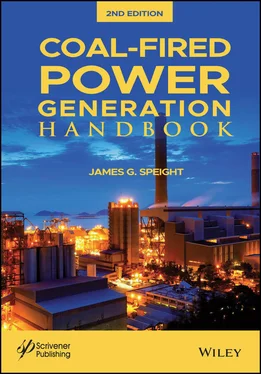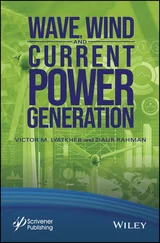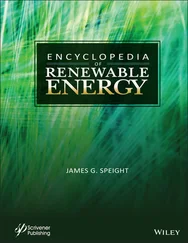Thus, as conditions fluctuate during the accumulation of plant debris, the botanical nature and chemical composition of the material surviving complete breakdown will fluctuate also, not only on a regional basis but also on a local basis. This fluctuation is the origin of the familiar banded structure of coal seams, which is visible to the naked eye, and provides strong support case for the different chemical and physical behavior of coals.
Furthermore, coal seams, sandstone, shale, and limestone are often found together in sequences hundreds of feet thick. The key to large productive coal beds or seams seems to be long periods of time of organic accumulation over a large flat region, followed by a rapid inundation of sand or soil, and with this sequence repeating as often as possible. Such events happened during the Carboniferous Period – recognized in the United States as the Mississippian and Pennsylvanian time periods due to the significant sequences of these rocks found in several states; other coal-forming periods are the Cretaceous, Triassic, and Jurassic Periods ( Chapter 1).
To complicate matters even further, coal is also considered (perhaps without sufficient scientific foundation) to be a metamorphic rock – the result of heat and pressure on organic sediments such as peat – but most sedimentary rocks undergo some heat and pressure and the association of coal with typical sedimentary rocks and its mode of formation usually keep low-grade coal in the sedimentary classification system. On the other hand, anthracite undergoes more heat and pressure and is associated with low grade metamorphic rocks and is justifiably considered to be an organic metamorphic rock. Thus, the degree of natural processing results in different quality of coal including such coal types as (i) lignite, which is the least mature of the true coals and the most impure; it is often relatively moist and can be crumbled to a powdery, (ii) subbituminous coal, which is poorly indurated and can be brownish in color, but is more closely related to bituminous coal than to lignite, (iii) bituminous coal, which is the most commonly used coal; it occurs as a black, soft, shiny rock, and (iv) anthracite, which is the highest rank of coal and is considered to be a metamorphic organic rock; it is much harder and blacker than other ranks of coal, has a glassy luster, and is denser with few impurities ( Table 2.1) ( Chapters 1, 2).
As anticipated because of local and regional variations in the distribution of floral species (i.e., site specificity) the relative amounts can vary considerably from one site to another ( Chapter 1). In addition to variations in the types of flora, there is also the potential for regional variations in the physical maturation conditions – these include differences such as variations in the oxygen content of the water as well as acidity/alkalinity and the presence (or absence) of microbial life forms. Variations of the plant forms due to climatic differences between the geological eras/periods would also play a role in determining the chemical nature of the constituents of the mature coal ( Chapter 1) (Bend et al. , 1991; Bend, 1992; Speight, 2013a).
Table 2.1 Types of coal.
| Rank |
Properties |
| Lignite |
Also referred to as brown coal; the lowest rank of coal and used almost exclusively as fuel for steam-electric power generation. Jet is a compact form of lignite that is sometimes polished and has been used as an ornamental stone since the Iron Age – since (approximately) 1200 BC. |
| Subbituminous coal |
The properties range from those of lignite to those of bituminous coal and are used primarily as fuel for steam-electric power generation. |
| Bituminous coal |
A dense coal, usually black, sometimes dark brown, often with well-defined bands of bright and dull material, used primarily as fuel in steam-electric power generation, with substantial quantities also used for heat and power applications in manufacturing and to produce coke. |
| Anthracite |
The highest rank; a harder, glossy, black coal used primarily for residential and commercial space heating. |
Thus, it is not surprising that coal differs markedly in composition from one locale to another. Indeed, pronounced differences in analytical properties of coal from one particular seam are not uncommon (Speight, 2013a), due not only to the wide variety of plant debris that could have formed the precursor but also to the many different chemical reactions that can occur during the maturation process. Indeed, the continuation and development of analytical studies related to maturation indices may enable scientists to determine the precise pathways by which maturation occurred (Speight, 2013a and references cited therein).
Since the resurgence of coal science in the 1980s and the need for new and reconstituted environmental legislation, there has been a pronounced resurgence in the attempts to determine the composition of coal through the development of up-to-date analytical methods (Speight, 2015). But it is not obvious that there has been a concomitant increase in understanding and formulating the molecular make-up and molecular structure of coal. Indeed, the concept of a coal structure (often referred to as an average structure for coal ) has continued for several decades and it is very questionable, in the minds of many scientists and engineers, as to whether any progress has been made down the highways and byways of uncertainty than was the case some 40 years ago. There are those who can, and will, argue convincingly for either side of this question. Or it might be wondered if (even denied that) there is a need to define coal in terms of a distinct molecular structure (Speight, 2013, 2020). In fact, this is a challenge for the analyst insofar as it is a challenge that may never be revolved. On the positive side, indications can be given by tracing the possible chemical precursors in the original mess of pottage that can lead to a variety of hydrocarbon and heteroatom chemical functional groups in coal and which can be determined by application of appropriate standard test methods.
2.3 Classification Systems
Coal (unless otherwise specified, the term is used generically throughout the book to include all types of coal) is a black or brownish-black organic sedimentary rock of biochemical origin which is combustible and occurs in rock strata (coal beds, coal seams) and is composed primarily of carbon with variable proportions of hydrogen, nitrogen, oxygen, and sulfur. Coal occurs in seams or strata and is a fossil fuel formed in swamp ecosystems where plant remains (often referred to as plant detritus) were preserved by water and by mud from oxidation and biodegradation (Speight, 2013, 2020).
The plant material (vegetal matter) is composed mainly of carbon, hydrogen, oxygen, nitrogen, sulfur, and some inorganic mineral elements. When this material decays under water, in the absence of oxygen, the carbon content increases. The initial product of this decomposition process is known as peat (which is not classed as a type of coal) and the transformation of peat to lignite is the result of pressure exerted by sedimentary materials that accumulate over the peat deposits. Even greater pressures and heat from movements of the crust of the Earth (as occurs during mountain building), and occasionally from igneous intrusion, cause the transformation of lignite to bituminous and anthracite coal ( Chapter 1) (Speight, 2013, 2020).
Coal classification, which is based on coal properties and utilization, is at least 200 years old and was initiated by the need to establish order to the confusing terminology of different coals. However, in spite of the need to bring order to the confusion, several types of classification systems arose which are essential for the buyer to know and are (i) the scientific systems, which are concerned with the origin, composition, and fundamental properties of coal, and (ii) the commercial systems, which focused on market issues such as technological properties, and (iii) the suitability of coal for certain end uses (utilization). The latter systems were designed to assist coal producers and users, with many being specific to the properties and use of coal in a particular country.
Читать дальше












